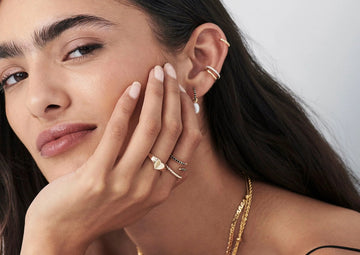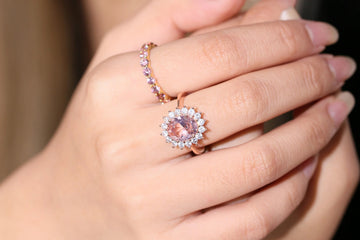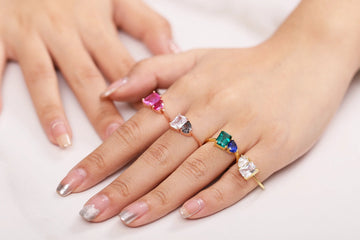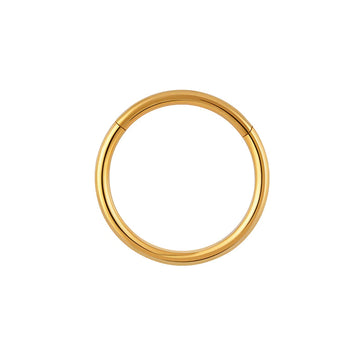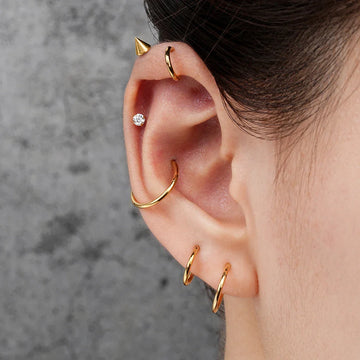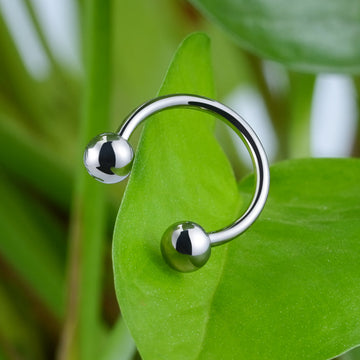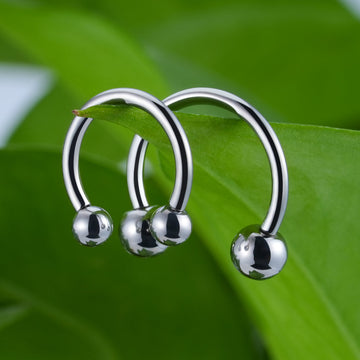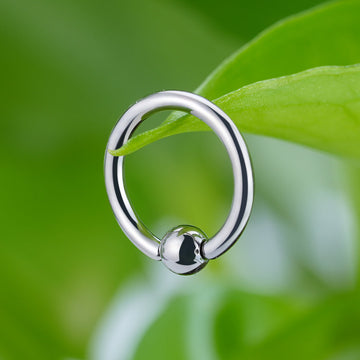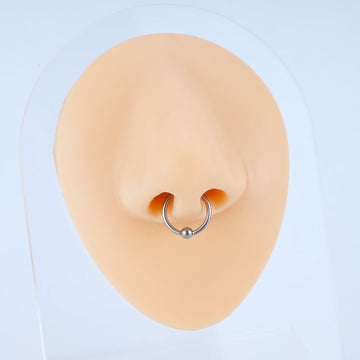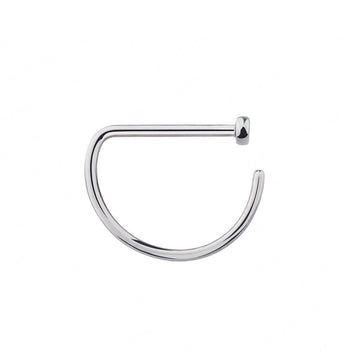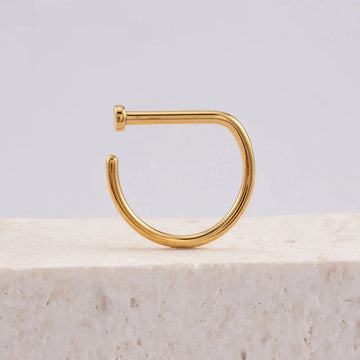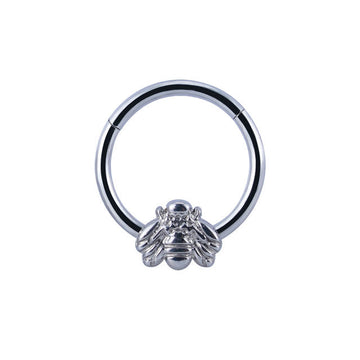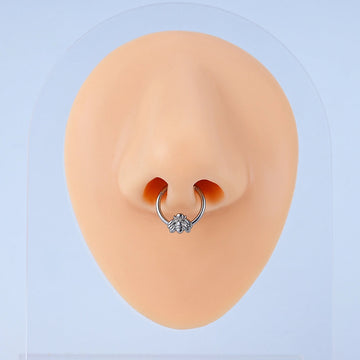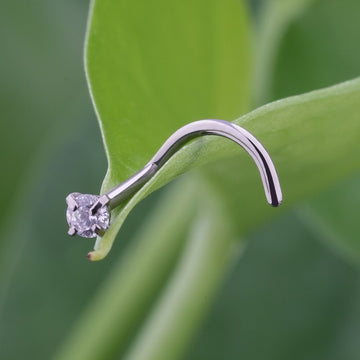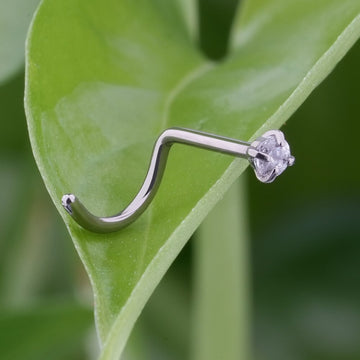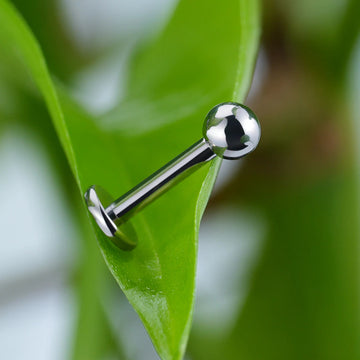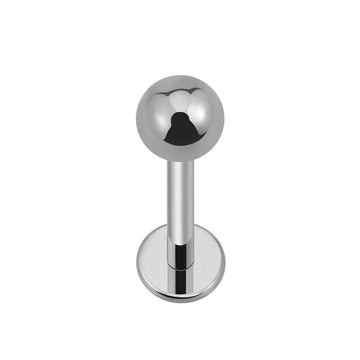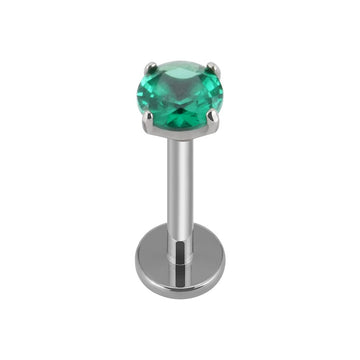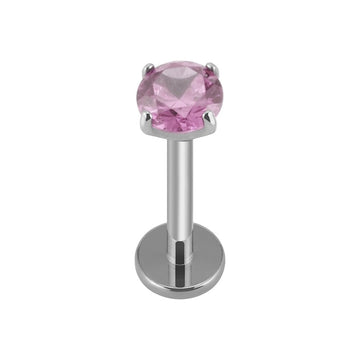Looking for a rare and bold piercing that makes you really stand out? The Austin bar might be right for you. It's a horizontal bar that goes through the tip of your nose. It can be very painful though, so it probably isn't the best idea if you've never had a piercing before.
What is an Austin bar piercing?
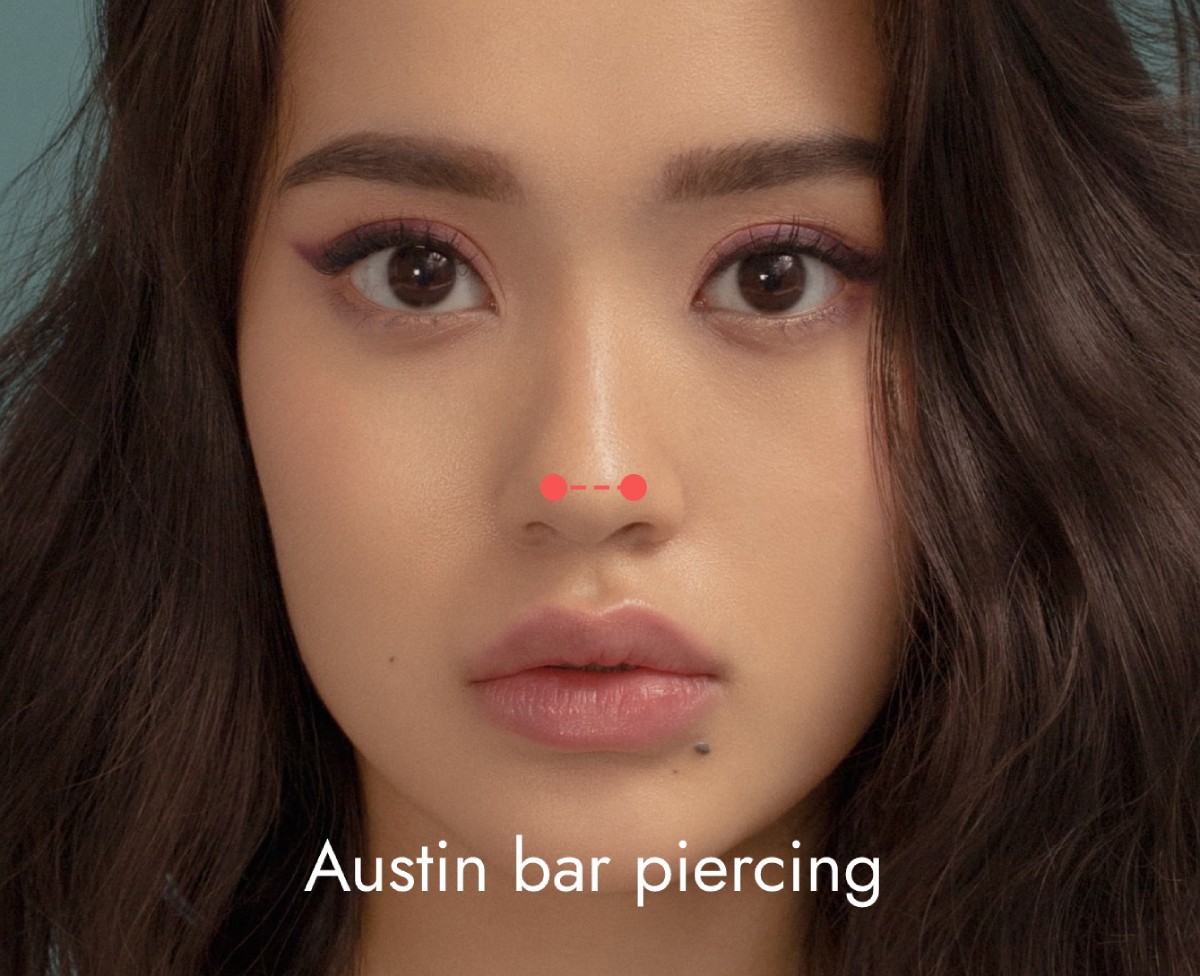
This is a somewhat unusual piercing type. It's a horizontal bar that goes through the tip of your nose, and the finished product makes it look like you have a small bead on either side of your nose.
But unlike a nasallang piercing, it doesn't pierce cartilage, it doesn't go through the nasal cavity, and it doesn't go through your nostrils itself.
Instead, the barbell threads through the skin right above the nostrils. This feature sets it apart from the more painful Nasallang piercing.
The Austin bar pricing is typically done with a fairly short straight barbell. In order to reduce the risk of the piercing migrating, most piercers will use a 16G or 14G needle.
Austin bar piercing pain
Everyone has different tolerances for pain, but the main disadvantage of an Austin bar piercing is that it can be very painful, so it probably isn't the best idea if you've never had a piercing before.
Austin bar piercing healing
How long does a bridge piercing take to heal? Even though it is quite painful, it only takes around 2 months to heal. That said, it is not a suitable choice for a first piercing.
How much is an Austin bar piercing?
Prices will vary widely based on location. But an Austin bar piercing usually costs about $25-$65. You are recommended to choose high-quality metals like titanium for your piercing even though it costs even more.
What gauge is an Austin bar piercing?
The Austin bar pricing is typically done with a straight barbell. In order to reduce the risk of the piercing migrating, most piercers will use a 16G or 14G needle.
However, this isn't an absolute rule, and a good piercer will consult with you and take a look at the anatomy of your nose first.
Length of an Austin bar piercing
The length of the barbell will vary depending on the size of your nose. The goal of the Austin bar is to make it look like you have a small bead or piece of jewelry on either side of your nose. Since you don't want an overly long (or overly short) barbell, your piercer will help you select a barbell that is just long enough.
The Mantis Piercing vs. the Austin Bar
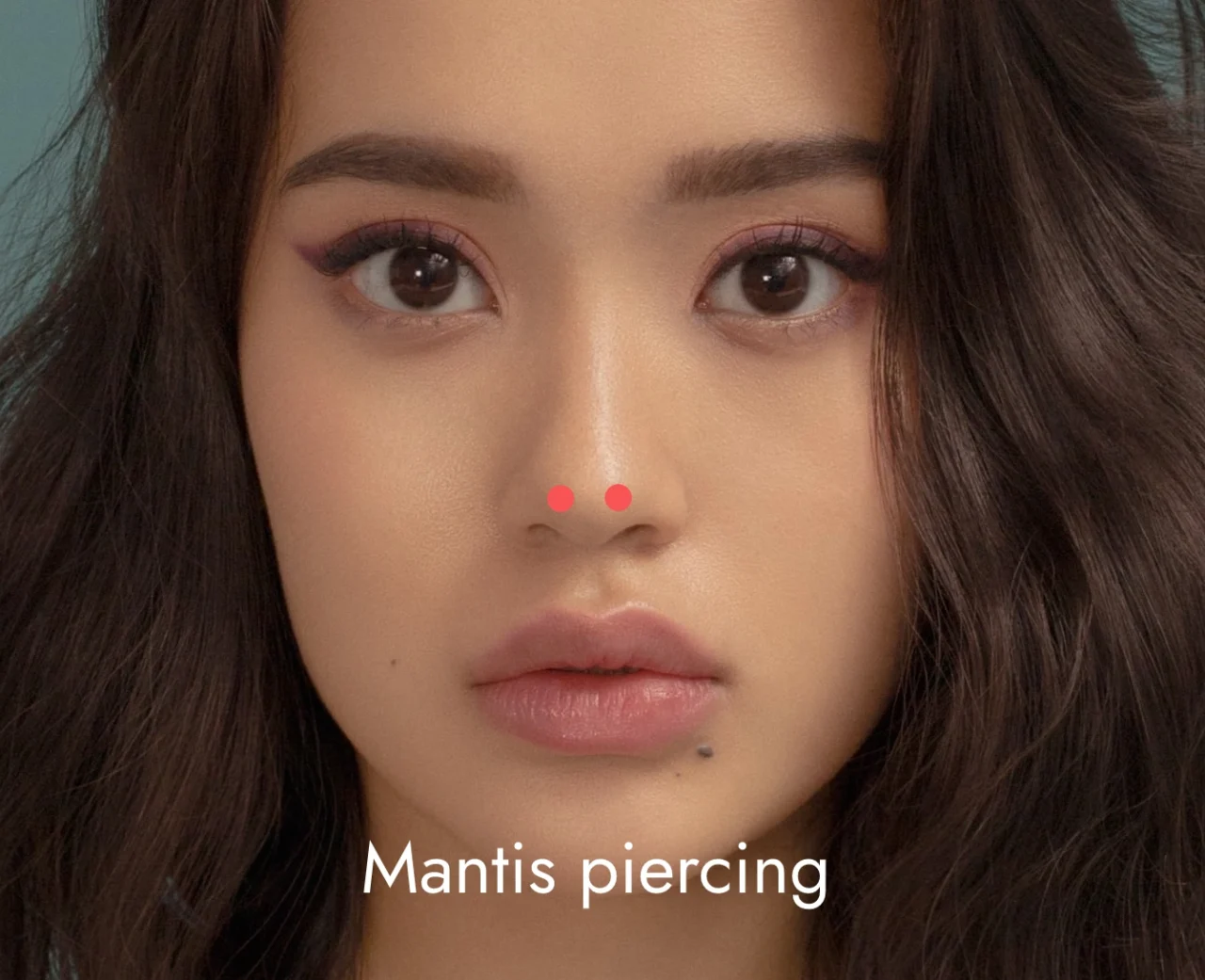
The Austin bar is fairly rare, and some people easily confuse it with the mantis piercing. Both piercings make you look like you have two tiny jewels on either side of your nose. While the two can look similar, the process of getting each one is quite different.
The mantis piercing is actually two separate piercings: one per nostril, while for an Austin bar piercing, there is only one piece of nose jewelry: the barbell.
To be detailed, for a mantis piercing, most people get two separate piercings so there are two pieces of jewelry on either side of the center of the nose.
In addition, these two pieces of a mantis piercing are closer together than the ends of an Austin bar, and the Austin bar piercing is a bit further up the nose.
Is An Austin Bar Piercing Right For You?
Lots of people like the look of an Austin bar piercing. And compared to many non-traditional piercings, this one looks surprisingly delicate. It's easy to mistake for two high nostril piercings.
This bold choice might be the right one for you if you like to change up the look of your piercings periodically. You might have seen some people with an Austin bar connect the two beads or jewels with a small chain across the nose. That creates a look that really stands out!
So how do you know if an Austin bar piercing suits you? Try looking at photos of people with the same piercing to see if you like the look. If you still aren't sure, you can even try holding up the bead ends of a barbell on either side of your nose! Just be sure to take your time deciding.
Potential Problems With Austin Bar Piercings
Though an Austin bar piercing can certainly look cool, it's important to be aware of problems that may arise.
1. Migration
Like any piercing, an Austin bar piercing may migrate. This is when your body rejects the piercing and tries to push it out, resulting in the jewelry moving. To reduce the risk of that happening, be sure to talk to your piercer and/or a doctor if it seems like your piercing isn't healing normally.
2. It catches on to things
Another potential problem (that's not unique to Austin bars) is the piercing catching on things. Be very careful when getting dressed, drying your face with a towel, etc. Especially with a newer piercing, snagging it on something can really hurt!
3. Swelling and infection
Like any other piercing, be mindful of the risk of swelling. In the days after your piercing, your nose may look especially red.
The Austin bar piercing is not a great piercing to get if you anticipate needing to remove it often. Especially in the two weeks after getting your piercing, removing it and putting it back in can get in the way of healing or potentially cause infection.
4. It can hurt to blow your nose with an Austin bar
If you frequently find yourself getting head colds, keep in mind that it can hurt to blow your nose with an Austin bar piercing. This is especially true soon after you get the piercing, but for some people, blowing your nose is always a bit uncomfortable with a piercing at the tip of your nose.
Nose jewelry for Austin bar nose piercing
1. Straight barbell

Straight barbell piercing implant grade titanium $14.9, SHOP NOW.
Straight barbells aren't really seen a lot in nostril piercings, but they are often used for more complex piercings. A barbell is just a long metal bar with two ball ends.
Pros:
- They heal faster than curved barbells
- The barbell ends hold the jewelry in place securely
- The piercing itself is fairly easy to clean
Cons:
- They are more prone to infection
- Barbell piercings tend to be more painful than other piercing types
2. Curved barbell
Curved barbells can only be used for an Austin bar nose piercing when the piercing is narrow enough. They have a curve that takes the shape of an arch with two balls on either end. You can go with a traditional round bead or opt for other shapes and accents.
Pros:
- Barbell jewelry can be a great statement piece and can stand out
- The curved shape can make bridge piercings more comfortable
- They are available in a very wide variety of designs
Cons:
- They may not be the best option if you’re looking for something subtle
- They also may get caught easily on items like clothing.
- They heal more slowly than studs
- They tend to be prone to migration or rejection
3. Austin bar piercing chain
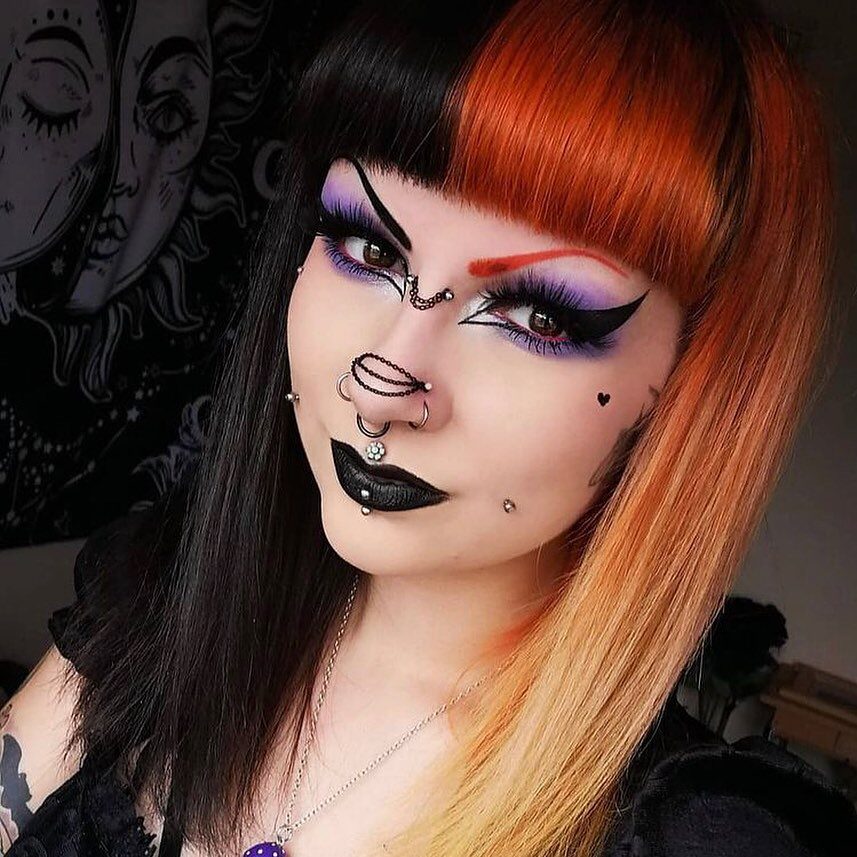
Ritual Jewellery & Co Double nose bridge chain $10, SHOP NOW.
Chains can be an eye-catching embellishment to nose piercings. Nose chains will connect each end of a bridge piercing across the bridge of the nose.
Pros:
- They have a distinctive look that can really make you stand out
- They're a great way to highlight piercings you already have
- You can easily alternate chains for a different look every day
Cons:
- They can easily snag on clothes, hair, etc.
- Heavier chains can pull on piercings and cause discomfort
Recommended materials for Austin bar piercing
1. Implant-Grade Titanium
Titanium is an element that is completely hypoallergenic, so it's probably the best material for lip piercings, especially if you have sensitive skin.
Implant-grade titanium is the purest form and will not change or corrode if it's exposed to skin or bodily fluids. Implant-grade titanium jewelry is durable, hypoallergic, lead-free, nickel free, and non-corrosive.
Implant-grade titanium is often marketed as ASTM F-136 titanium. Compared to ASTM F-136 titanium, G23 titanium is not an implant grade of titanium.
Price Range: About $10-$20.
Pros:
- Approved by the Association of Professional Piercers
- Won't cause allergic reactions
- Is scratch-resistant and won't fade
Cons:
- Not as valuable as gold, silver, or platinum
- Doesn't sparkle quite as much as other metals
2. 14K or 18K Gold
If you're looking for a glittering, valuable metal for your lip piercing jewelry, either 14K or 18K gold may be your answer.
It is also one of the best metals for lip piercings that are highly recommended not only by piercing experts but also doctors. Its excellent quality of being inert makes it suitable for first piercings.
However, gold is a fairly soft metal, so it doesn't stand up to scratches and excessive wear. Compared to 14K gold, 18K gold is more prone to being affected by everyday use as it is softer and is closer to being pure 24K gold.
Both of these metals include other metal types in order to make them stronger. In order to avoid skin reactions, look for nickel-free metals.
Price Range: About $30-$200.
Pros:
- One of the most valuable materials
- Will not easily tarnish
- Offers plenty of sparkles
- Is easy to engrave or use to set stones
Cons:
- May contain non-hypoallergenic metals
- 18K gold in particular is not very scratch resistant
3. Platinum
Platinum is a precious metal, so it's one of the pricier options on the list. It's completely hypoallergenic, so it's safe for even very sensitive skin. Its brilliant luster makes it a good choice for those seeking a sparkly, high-end look.
Price Range: About $40-$200.
Pros:
- Hypoallergenic and non-reactive
- Has a brilliant shine
- Is a very valuable material
Cons:
- Is a lot heavier than other metals
- It's uncommon, so your jewelry choices might be limited
4. Surgical Stainless Steel
Lots of new piercings are done in stainless steel. This material is affordable and typically doesn't cause reactions. However, it contains a small amount of nickel, so if you have a nickel allergy, it might be best to choose something else.
It is incredibly resistant to corrosion and will keep its shine for years.
If you're considering steel, 316L or 316 LVM steel is probably your best choice. Both names stand for the same surgical steel material, but the "VM" stands for"vacuum melt," or the way the steel is produced.
Price Range: About $10-$40.
Pros:
- Very affordable
- Common enough that you'll have plenty of jewelry choices
- Extremely durable and resistant to damage and corrosion
Cons:
- May cause reactions in those with nickel allergies
- Not considered as valuable as some other materials
How to care for an Austin bar piercing?
- Take care to avoid contaminating the piercing.
- Avoid touching it or applying makeup very close to it.
- Avoid getting in water that might be dirty.
- Clean your piercing twice per day using a saline/salt solution or a piercing aftercare spray.
- When brushing your teeth and cleaning your mouth, use an alcohol-free antibacterial mouthwash.
- And of course, make sure to avoid snagging on clothes or towels.
- Don't move the piercing before it heals. Pulling on a piercing early in healing is painful, but it also can get in the way of healing or damage the piercing itself.
How to clean an Austin bar piercing?
- Make a salt solution by mixing 1/2 teaspoon of salt with one cup of water. Stir the solution until it dissolves. As an alternative, you can buy ready-to-use piercing aftercare sprays. If you see signs of infection, you can also use antiseptic solutions, such as betadine, isopropyl alcohol, or diluted hydrogen peroxide.
- Soak a cotton ball in the solution and dab it around the piercing site. Don't remove the jewelry!
- Take clean gauze or tissue and pat the area dry.
Your piercer should give you detailed instructions on keeping your piercing clean once the piercing has been placed.
In the end
If you want a nose piercing but want something a little further off the beaten path, the beautifully unique Austin bar piercing is worth considering! For best results, make sure you work with an experienced piercer and follow all aftercare instructions!
Read More
Nose piercing: Everything that you need to know
Best metals for nose rings: Pros, cons, and prices
9 most common types of nose rings, studs, and chains with pictures


